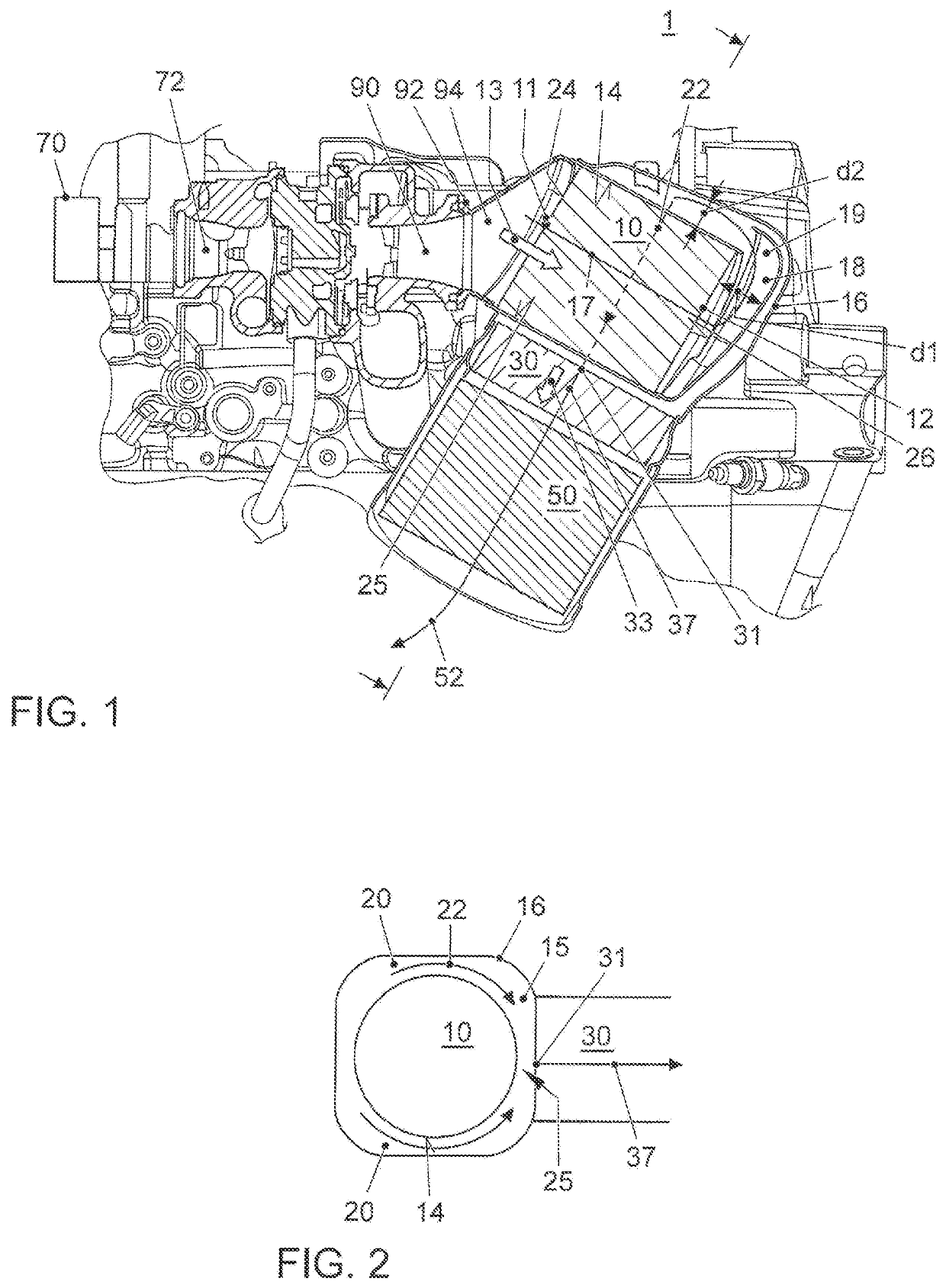Exhaust gas aftertreatment system for an internal combustion engine
an exhaust gas aftertreatment and internal combustion engine technology, which is applied in the direction of engines, machines/engines, mechanical equipment, etc., can solve the problems of difficult to provide an ageing-resistant three-way coating on a particulate filter for all markets, configuration to be much larger, and light-off problems, so as to improve the light-off, optimize the catalytic conversion in the first catalytic converter, and achieve positive heat balance
- Summary
- Abstract
- Description
- Claims
- Application Information
AI Technical Summary
Benefits of technology
Problems solved by technology
Method used
Image
Examples
Embodiment Construction
[0028]FIG. 1 shows an exemplary embodiment of an exhaust gas aftertreatment system 1 according to the invention. Other additional components are shown in the present depiction in which the exhaust gas aftertreatment system 1 has been installed, whereby the technical depiction serves merely for illustration purposes and the invention is not limited to such an implementation. Exhaust gas from an internal combustion engine 70 is fed to the exhaust gas aftertreatment system 1. In this context, the internal combustion engine 70, preferably a gasoline engine, is shown schematically. Moreover, a turbocharger having a compressor 72 and a turbine 90 is shown by way of example. Via a connecting flange 92, for example, an inlet funnel 94 adjoins the turbine 90. In this embodiment, by way of example, the exhaust gas is fed to the exhaust gas aftertreatment system 1 via the inlet funnel 94. In this exemplary embodiment, the inlet funnel 94 is slanted on the outlet side and it deflects the exhaus...
PUM
 Login to View More
Login to View More Abstract
Description
Claims
Application Information
 Login to View More
Login to View More - R&D
- Intellectual Property
- Life Sciences
- Materials
- Tech Scout
- Unparalleled Data Quality
- Higher Quality Content
- 60% Fewer Hallucinations
Browse by: Latest US Patents, China's latest patents, Technical Efficacy Thesaurus, Application Domain, Technology Topic, Popular Technical Reports.
© 2025 PatSnap. All rights reserved.Legal|Privacy policy|Modern Slavery Act Transparency Statement|Sitemap|About US| Contact US: help@patsnap.com

